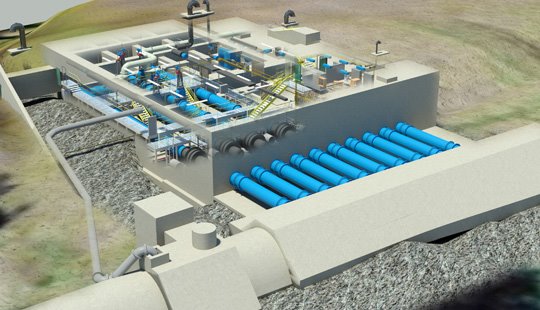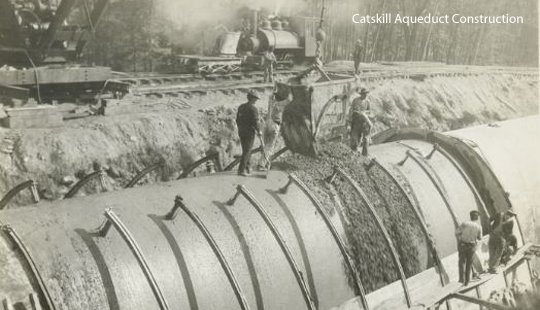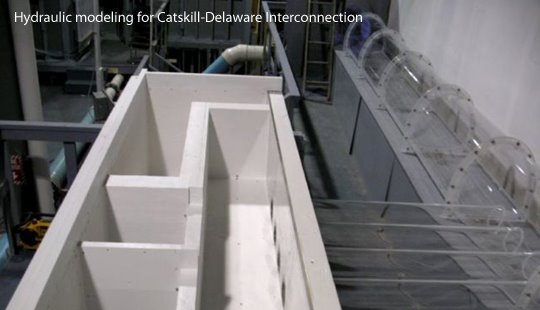Opportunity
Together, the Catskill and Delaware Aqueducts deliver more than a billion gallons (3.8 billion liters) per day of drinking water to New York City from six reservoirs located in the Catskill Mountains.
Constructed from 1907 to 1916, the Catskill Aqueduct runs 92 miles (148 kilometers) from the Ashokan Reservoir in Ulster County to the Hillview Reservoir in Yonkers. An at-grade, gravity-flow conduit, it crosses 1,100 feet (335 meters) below the bed of the Hudson River at Storm King Mountain. In 1909, Harper’s Monthly said, “The project ranks as the greatest municipal water-supply enterprise ever undertaken, and as an engineering work is probably second only to the Panama Canal.” It carries about 40% of New York City’s water supply.
The Delaware Aqueduct, the newest in the New York City, was constructed between 1939 and 1945. A deep-rock pressurized tunnel, at 85 miles (137 kilometers) in length it is reportedly the longest continuous underground tunnel in the world. Beginning at the Rondout Reservoir on the border of Ulster and Sullivan Counties, it carries about half of New York City’s water supply.
Because heavy rainstorms cause turbidity in the water supply from the Catskill Aqueduct, the New York City Department of Environmental Protection launched a project to create an interconnection between the two aqueducts at Shaft 4 in Ulster County, where they cross.
Solution
In 2009, Mott MacDonald was retained as part of a joint venture team to perform the geotechnical investigations and the structural, architectural, and landscape designs for Catskill-Delaware Interconnection. We also provided program management services for the overall joint venture contract, and technical reviews of the entire interconnection design.
The Interconnection includes a major underground structure, designed as an expansion of the existing Delaware Aqueduct Shaft 4. The new structure features large-diameter piping, flow metering, and pressure-reducing valves.
The Interconnection can transfer up to 365 million gallons (1,382 million liters) of water per day from the Delaware Aqueduct, reducing its pressure from as much as 100 pounds per square inch to open-channel flow conditions.
Building Information Modeling (BIM) and physical scale models were used to optimize the hydraulic design of the Interconnection. Our design allowed for construction with minimal outages for the existing aqueducts.
Outcome
The Catskill-Delaware Interconnection will allow the NYCDEP to reduce the use of Catskill water supplies during periods of high turbidity. This will reduce the need for chemical water treatment while maintaining high-quality water without filtration.
In May 2013, Department of Environmental Protection Commissioner Carter Strickland said, “Ensuring the delivery of more than 1 billion gallons of high-quality water to more than 9 million New Yorkers every day requires long-term planning, and the interconnect at Shaft 4 is an important project for the future of New York City’s water supply system.
“By connecting the Delaware Aqueduct to the Catskill Aqueduct, DEP will have another mechanism to help it deliver the highest quality drinking water from across its supply system.”
As part of planned testing, the NYCDEP decided to temporarily shut down and partially dewater the Delaware Aqueduct for three weeks, starting in October 2023. The aqueduct would be shut down again from October 2024 until the spring of 2025 to repair leaks.





